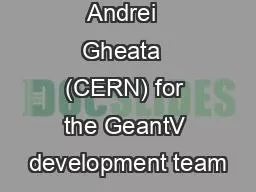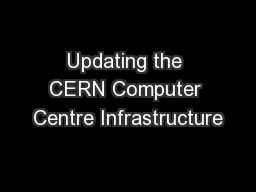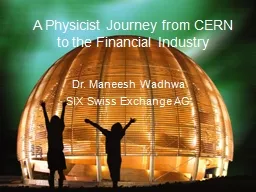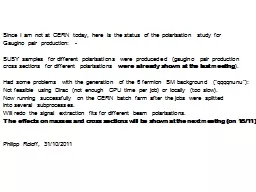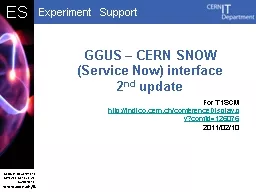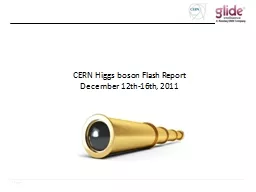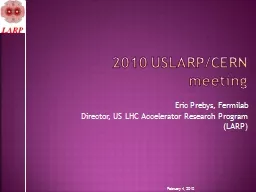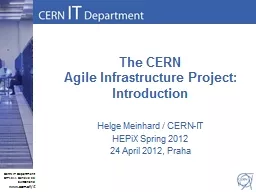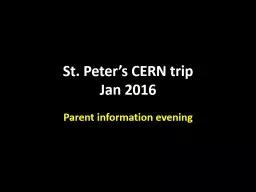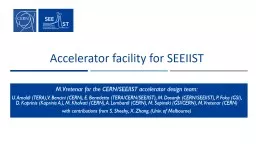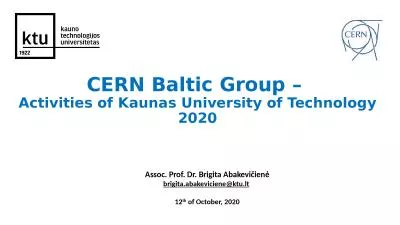PPT-Andrei Gheata (CERN) for the GeantV development team
Author : inventco | Published Date : 2020-06-26
GeantV Parallelism transport structure and overall performance Outlook Motivation amp objectives Implementation Concurrent services Tuning knobs and adaptive behavior
Presentation Embed Code
Download Presentation
Download Presentation The PPT/PDF document "Andrei Gheata (CERN) for the GeantV de..." is the property of its rightful owner. Permission is granted to download and print the materials on this website for personal, non-commercial use only, and to display it on your personal computer provided you do not modify the materials and that you retain all copyright notices contained in the materials. By downloading content from our website, you accept the terms of this agreement.
Andrei Gheata (CERN) for the GeantV development team: Transcript
Download Rules Of Document
"Andrei Gheata (CERN) for the GeantV development team"The content belongs to its owner. You may download and print it for personal use, without modification, and keep all copyright notices. By downloading, you agree to these terms.
Related Documents

